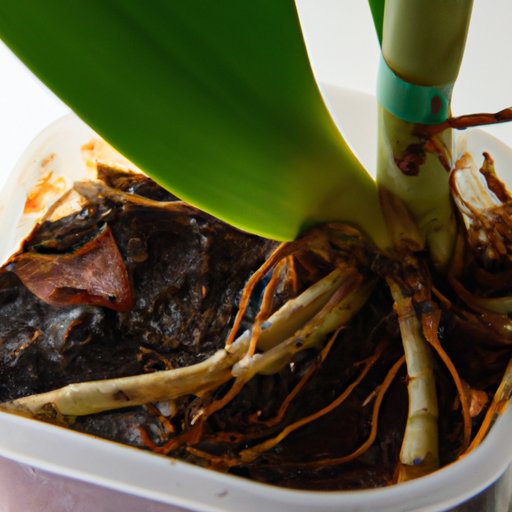
Introduction
Orchids are magnificent flowers that can be enjoyed indoors with proper care. These exotic plants bring a sense of beauty to any environment, but they require specific care to thrive. In this article, we’ll provide you with the ultimate guide to caring for your indoor orchids. From selecting the appropriate soil and pots to optimizing the environment, we’ll cover all the important aspects of orchid care. You’ll also learn about the common orchid problems and how to troubleshoot them, as well as some advanced tips for taking your orchid care to the next level.
The Ultimate Guide to Caring for Your Indoor Orchids: Tips, Tricks, and Best Practices
When it comes to indoor orchids, choosing the right soil and pots is crucial. Orchids are epiphytes, which means they grow on other plants in their natural habitats, and their roots prefer a well-draining medium. Using a soil mix designed specifically for orchids is recommended. Choose a pot that allows for airflow and has drainage holes to prevent root rot.
Orchids need the right amount of sunlight and water to thrive. Most orchids prefer indirect light, but some varieties may require stronger sunlight. Watering should be done only when the soil is almost dry – over-watering can lead to root rot. It’s best to wait until the pot feels light in weight to ensure that the plant is ready for water.
Common orchid problems include pests, fungal infections, and over-fertilization. It’s essential to prevent problems from occurring rather than resorting to trying to cure the plant. Keep a close eye on your orchid plant and look out for signs of wilt, yellowing, or the presence of bugs.
Creating the Optimal Environment for Your Indoor Orchids
The optimal environment for an orchid includes specific temperature, humidity, and air quality factors. Most orchids thrive in temperatures between 60 and 80°F but check your specific plant variety’s preferences. A humidity range of 40% to 60% will maintain excellent plant growth. Air circulation and quality are also essential to prevent stagnant air and fungal growth. Increasing humidity can be accomplished with a humidifier or by placing a tray of water near your orchid pots. Careful placement of your orchids in areas without drafty windows or doors is also necessary.
Unpacking the Five Biggest Myths about Caring for Indoor Orchids
With the popularity of orchid care, there are various myths that have originated over time. Watering your orchids every day is not necessary and could be harmful to the plant. Orchids require a well-draining medium, so planting them in pots without drainage holes is a significant problem that will lead to root rot. Other areas of myth-making include repotting, pruning, and fertilization frequency. Be sure to research the best practices for caring for your specific orchid to avoid any plant damage.
How to Troubleshoot Common Problems with Indoor Orchids
Root rot, pest infestations, and leaf discoloration are common issues that orchid owners may encounter. Root rot happens when the soil is too saturated and causes the roots to rot, which can often kill the plant if it is left untreated. Fungal infection can occur if conditions are too damp. And pests like mealybugs, scale, and spider mites are prevalent issues. It’s best to address these issues as soon as possible by repotting and using an appropriate pesticide for pest control or by attempting a home-made pest spray of soapy water and garlic.
Beyond Basic Care: Tips for Taking Your Indoor Orchids to the Next Level
What can you do to take your orchid care to the next level? Fertilizing is an excellent way to encourage orchid growth, but be careful not to over-fertilize. Propagation is another advanced technique to propagate orchids. Experimenting with different varieties, potting mediums, and baskets will level up your orchid care.
Conclusion
In conclusion, orchids are graceful and beautiful flowers that require research and care to thrive indoors. Remember to choose the right soil and pot, give them the right amount of water and sunlight, and optimize the environment to promote growth. Avoiding and preventing common orchid problems is vital, and taking your orchid care to the next level can make for an even better experience.





